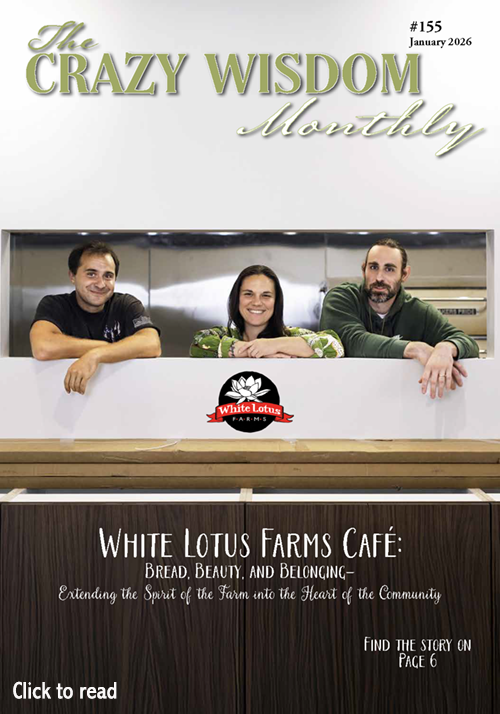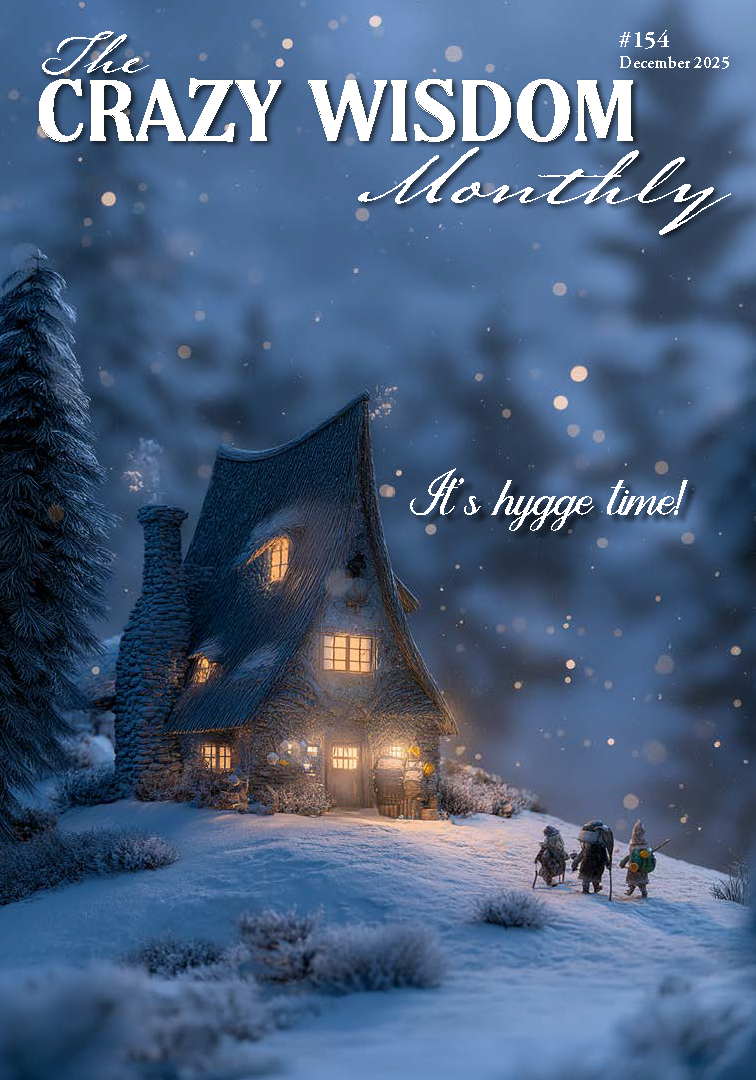By Julianne Popovec | Photos by Susie Ayer
Sylvan Run Sanctuary is located on a spacious stretch of land in Chelsea, Michigan. The large home and surrounding property are perfect for various gatherings and special occasions: classes, workshops, artist retreats, weddings, ceremonies, and more. For this installment of Leaps of Faith, owner Kathy Squiers spoke with us about how Sylvan Run Sanctuary came to be — how a home she built with her husband, Bob, turned into a place for others to experience and enjoy, in solitude or in community.
Sylvan Run Sanctuary, 1280 Sylvan Road, Chelsea, Michigan 48118; (734) 475-3408; website: sylvanrunsanctuary.com
Q. Kathy, can you tell us about Sylvan Run Sanctuary?
A. Sylvan Run Sanctuary (SRS) is a gorgeous place, peaceful and inviting — a perfect place to share special celebrations and ceremonies, either in solitude or in community. Located in rural countryside, surrounded by acres of nature preserves, Sylvan Run Sanctuary is halfway between Ann Arbor and Jackson, 16 miles to each city, and only 4 minutes from historic Chelsea.
Q. What motivated you to start Sylvan Run Sanctuary?
A. Sylvan Run Sanctuary was conceived while “walking the land” the house was built on. In 2002, while we dated, Bob and I would take frequent walks through what has become the 50-acre Squiers Preserve, and we worked on creating a pond together. On one of these walks Bob asked me to marry him, and we shared visions of an elegant wedding in the open fields surrounded by the beautiful woods. This early vision is one thing that inspired the idea of sharing with others this special place for important life ceremonies.
Through the years, we worked hand-in-glove, raking fields, piling rocks, planting trees, lawns, and gardens. Whenever our children and grandchildren visited, they all shared in the pleasant rhythms of “farm life” with vegetable gardens, Shire horses, dogs, cats, chickens, fish, and other wildlife for whom this place is a sanctuary.
In 2007, Bob and I transposed 50 acres of this beloved land into a Conservation Preserve with a public easement “for all the grandchildren.” In the fall of 2008, Bob and I moved into the home we had planned and built together while living in the cozy barn apartment at the front of the property. Sadly, Bob passed away in May of 2010. Grateful for such a beautiful house, I yearned to have others share this amazing place. So I started having family reunions and community events; after turning the large garage into an art studio, I started teaching art classes, and now gardening classes.
““Sylvan Run Sanctuary is really about a unique and wonderful piece of land, and the house, which seemed to build itself in anticipation for something bigger and beyond ourselves.””
Q. Tell us about the house, please.
A. Accommodations include an open floor plan with gorgeous views, a large kitchen with two dining areas, a formal yet comfortable living room with cathedral ceilings, an elegant laundry/kitchenette room, a 700-square-foot art studio, a large sunny walkout basement with 12-foot-high ceilings, and another living area that includes a library, media center, ‘movement’ room, and a walkout to an enclosed lawn. The house has plenty of group work areas for gatherings, meetings, conferences, workshops, classes, sleep-overs, and more. SRS is really
about a unique and wonderful piece of land, and the house, which seemed to build itself in anticipation for something bigger and beyond ourselves.
Q. Surrounding the home, there are Chakra Gardens that visitors can walk through and enjoy. Can you explain more about them and how they came to be?
A. After Bob passed away, I went to visit my family in Colorado. While walking along a mountain creek, I felt familiar sanctuary in the beauty and peace of nature. That night in a dream, I found myself “flying” above the Sylvan Road home Bob and I had built, and it was like I was watching an old-fashioned film, fast-forwarding in time. Two trees that we had planted were growing larger and older, and I observed seven gardens developing in a line from the top of the hill near the house, down past the tree beyond the pond. These seven gardens were in the shapes of symbols I thought were used to describe the Seven Sacred Chakra Gardens of Peru, which I had just read about. After I returned home, and throughout the following year, I researched, wrote notes, sketched, and drew up plans for these seven gardens in accordance with teachings about the energy centers of the body.
Q. Can you provide some examples of plants and natural materials you plan to include in each garden to symbolize the different energy centers?
A. In the fourth (heart) chakra garden, I plan to plant flowers with heartfelt meanings, utilizing the “Language of Flowers.” The “Language of Flowers” refers to the common practice of using “flower dictionaries” that were popular in the seventeenth and eighteenth centuries. The books ascribed certain meanings to different flowers, so that when people sent flowers, they could communicate a somewhat literal message. For instance, a red rose still means “love and passion,” while a white rose means “innocent love,” and an orange rose means “fascination.” Plantings around various roses will include snow-drops, which have a meaning of “consolation and hope;” pink carnations, which mean “I will never forget you;” alstroemerias (“devotion”); jonquil (“desire”); gladiolas (“you pierce my heart”); hyacinths for beauty; dahlias for dignity, and so on.
The third chakra garden will contain a fire-pit, and the second chakra garden will have a water feature, and so on.
““There are writers who visit regularly. There have been drummers and dancers, community bonfires and picnics; there have been art classes, gardening apprenticeships, Jungian symbolism classes, group meditations, visualizations and yoga.””
Q. What do you hope the Chakra Gardens will provide to artists or to anyone who visits the land?
A. Gardens that will stimulate the senses associated with the seven chakra energies of the body; spaces for contemplation, visualization, inspiration, and healing; places to walk and sit mindfully and meditatively; and gardens rich with meanings that encourage play and learning throughout various stages and steps in life journeys.
Q. Are any artists staying at Sylvan Run Sanctuary now?
A. There are writers who visit regularly. There have been drummers and dancers, community bonfires and picnics; there have been art classes, gardening apprenticeships, Jungian symbolism classes, group meditations, visualizations and yoga. Recently, there were groups taking nature walks, searching for the native “lady-slipper” orchids and exploring the unusual artesian spring domes. (The Squiers Preserve has several artesian springs, and they can make different landforms when they come to the surface of the earth. When they come up under peat, the water gently pushes up, creating the formation of “peat domes.”) There was also a group of animal footprint “trackers” and a group celebrating Rosh Hashanah. Other artists who may be interested in workshop retreats here: scrapbookers, quilters, basket weavers, and mosaic makers.
Q. You mentioned that “in solitude, in community” is the tagline for Sylvan Run. What are some activities you are planning that involve community?
A. In order to continue developing the Chakra Gardens, SRS will be hosting periodic “Chakra Garden Parties,” specifically to open the fourth heart chakra garden, to install the water feature for the second chakra garden, and to help plant and maintain all of the gardens.
Q. Where are you from, Kathy? How long have you lived in Chelsea?
A. I was born in Bay City, Michigan (I moved a lot as my mom was a bit nomadic; Texas, Colorado, Oregon, California). I raised and “launched” four kids in Ann Arbor and moved to Chelsea after Bob asked me to marry him in 2002.
““Whenever our children and grandchildren visited, they all shared in the pleasant rhythms of “farm life” with vegetable gardens, Shire horses, dogs, cats, chickens, fish, and other wildlife for whom this place is a sanctuary.””
Q. Where did you go to college and what did you study?
A. I went to college in Colorado for fine arts and botany, then chemistry. I worked as an analytical chemist in Colorado, then as an environmental chemist in Michigan. I went back to school in 1991 at U-M to study landscape architecture and botany, with a concentration in resource ecology management, to graduate in 1994.
Q. You mentioned that you are a Parks Horticulturalist for the Washtenaw County Parks and Recreation Commission and that you are about to retire. How long have you worked there?
A. I worked in plant greenhouses and nurseries as a landscape designer for years, and I’ve been with Washtenaw County Parks and Recreation Commission as Parks Horticulturalist and Gardener since 1998.
Q. How did you become interested in horticulture and gardening?
A. I was always a “tree hugger,” enthralled by “The Standing Nations.” I have always worked in either my own or others’ gardens since I was 14.
Q. Besides being a horticulturist and gardener, you are an artist as well. What type (or types) of art do you enjoy doing?
A. Currently, I am painting on wood with a variety of mediums (pastels, oil and chalk, acrylic, stains, and so on), and I belong to the “Saturday Artists” group at the U-M Art and Architecture building. On Saturdays, hundreds of artists have been taking turns meeting in clusters of about a dozen, to teach and share what we know about art and craft to one another. Mostly, I teach basic classes regarding the elements and principles of art — line, value, texture, perspective, and so on. I have also been teaching life and “virtual” life drawing, composition, framing, and collage classes in the studio at Sylvan Run Sanctuary.
Many of the classes I teach utilize concepts of Jungian archetypes, seen throughout one’s life developmental stages. I use experiences, concepts, and symbologies of nature, dreams, archetypes, and story-telling. I am developing interdisciplinary classes and art project programs that will combine writing and collage, music and drawing, and movement and gardening.
Q. Where did the name Sylvan “Run” Sanctuary come from?
A. Bob enjoyed literally running between the barn he had here (where SRS is), and the barn where he housed cattle, over on Old US-12. His farm was called Sylvan Run Farm. This land of sanctuary and inspiration, gardens and trees, took on the name “Sylvan Run” partly in memory of its recent heritage.
The next Chakra Garden parties are scheduled on Sundays; April 27 and May 4, 2014.
To join in the community “opening” of the heart, second, and fifth Chakra Gardens, please call Kathy at (734) 385-6560. There will be more garden parties scheduled as the seasons proceed.



































































































































































































During the spring and summer there is always a lot of buzz around pollinators, their habitats, and how to support them. But did you know you can continue to support your backyard friends in the fall and winter as well? Through a few simple steps you can continue to provide for your local pollinators as the weather turns cold. By offering them housing during the snowy winter months you can guarantee they’ll return to your gardens the following year. It’s a win for everyone!